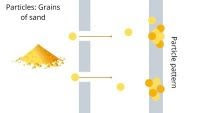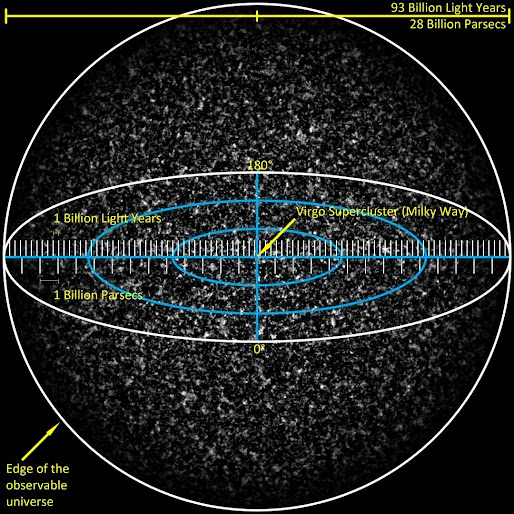We derive our word weird from the Anglo-Saxon wyrd whose original meaning was fate or destiny. But because fate very often throws us unexpected and often inexplicable twists, the expression "That's weird" or "That's just weird" (meaning that's fate) has over time acquired a whole other adjectival sense of "That's odd" (or creepy/ peculiar/strange/unusual), and it's now somewhat sundered from its Anglo-Saxon roots. For the sake of today's blog, let's call them type one and type two weird.
Addressing type one weird first, the original concept of fate from Old Norse and German mythology embodied the notion in a group of three female deities known as the Norns: Urðr (thought to be the true origin of the word wyrd), Verdandi and Skuld, though this trio probably had an even older precedent in the Moirai of Greek myth, the three sisters Clotho, Lachesis and Atropos, goddesses of destiny known collectively as The Fates.
In their personifications, Urðr means literally "that which has come to pass", Verdandi denote
s "that which is in the process of happening", and Skuld signifies
"debt" or "guilt".
These three sisterly goddesses were thought to be responsible for variously creating, directing (literally weaving) and influencing the fates and destinies of mortals from the cradle to the grave. They can be found in the poetic Edda, in early English poetry such as The Wanderer: "Wyrd bið ful aræd" (Fate remains wholly inexorable), in Beowulf: "Gæð a wyrd swa hio scel!" (Fate goes ever as she shall!), and of course later in the three witches of Macbeth, predicting and influencing the fortunes of Shakespeare's title character.
My first introduction to this concept of fate or destiny came as a child from reading Alan Garner's wonderful novel The Weirdstone of Brisingamen, now part of a trilogy including The Moon of Gomrath and Boneland. No one in their right mind messes with the Norns.
Moving on to type two weird in its more modern usage, I couldn't resist introducing you to the wonderfully wacky work of multi-disciplinary artist Petr Válek, who hails from Šumperk in north-eastern Czechia.
Válek is fascinated by what can be done with recycled junk, old machinery, musical instruments and electronuc gadgetry. He assembles strange new functioning musical instruments from spare and broken parts and uses them to create electronic 'noise music'. He also forges weird and disturbing anthropomorphic folk-art (heads a speciality) out of the discarded bric-a-brac of the 20th century (see below) and has recently started using AI to generate images of his surreal, post-apocalyptic junk-punk figures. To me his startling and evocative creations are the very definition of weird.
If you're intrigued by what you see, you can check him out on Facebook and/or Instagram. You can also listen to and watch him and his electronic compositions on theVAPE YouTube channel, or read more about his works in such publications as The Wire.
Skipping niftily on to some poetry, in seeking a synthesis of type one and type two weird, I've not attempted a slavish mirroring of the alliterative, half-line metrical form of Anglo-Saxon poetry in this latest offering from the imaginarium, but I hope it will disconcert nonetheless. The inspiration came from a story yesterday morning in my BBC news feed: Women in the north-west of England say they feel unsafe after videos taken of them on nights out without their knowledge have gained millions of views on social media and attracted a slew of misogynistic comments. An outrageous liberty. Cue those fateful Norns. (Not my best poem, I know, but I have run out of time, so for now it will have to do!)
Somewhere Between the Cocoa Lounge and Hysteria
Across the canvas of a frantic Friday night Anytown square,
lit by de Chirico's moon, lime white and moodily menacing,
three party girls splash raucous colours like fresh wounds.
Seemingly insensible as to how fate, once their stiletto heels
get trapped in time's escalator, will drag them back to an age
of cobbles, crooked alleys and crow-topped roofs, they laugh
their giddy way from bar to nightclub. Tracking in their wake
a rake with camera films their passage, is amazed to see them
vanish before his eyes. Besotted and blindspotted he stumbles
into a slime tip of a shambles, comes up suddenly face to face
with a spooky trio clad all in black leather and withering looks
who jeer and curse, spit at him and claw his clothes like birds,
force him down and poke out both his eyes with sharp fingers.
His body is found next morning, under a merciless de Chirico
sunrise, with shadows in all the wrong places. A post mortem
suggests a massive heart attack and maybe mutilation by rooks
or magpies. Curiously there were no witnesses and nothing on
CCTV. The square is deserted then suddenly this body is there.
Three party girls wake very late with hangovers to die for so it
must have been an epic night out, They can't explain the blood
under their fingernails but decide it's best to say nothing about.
The only way to follow that is with some more of Petr Válek's brilliant and weird AI creations.
Thanks for reading. Respect your wyrd, S ;-)















Clock.jpg)
%20BLOG%20Photo%208%20copy.jpg)
%20BLOG%20PHOTO%204%20copy.jpg)











